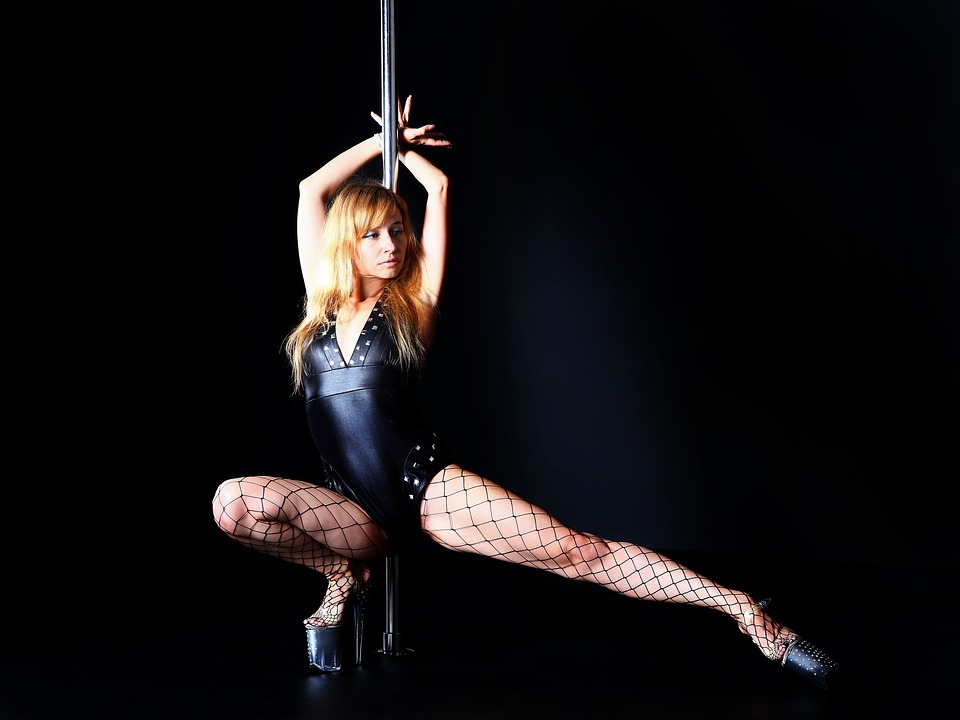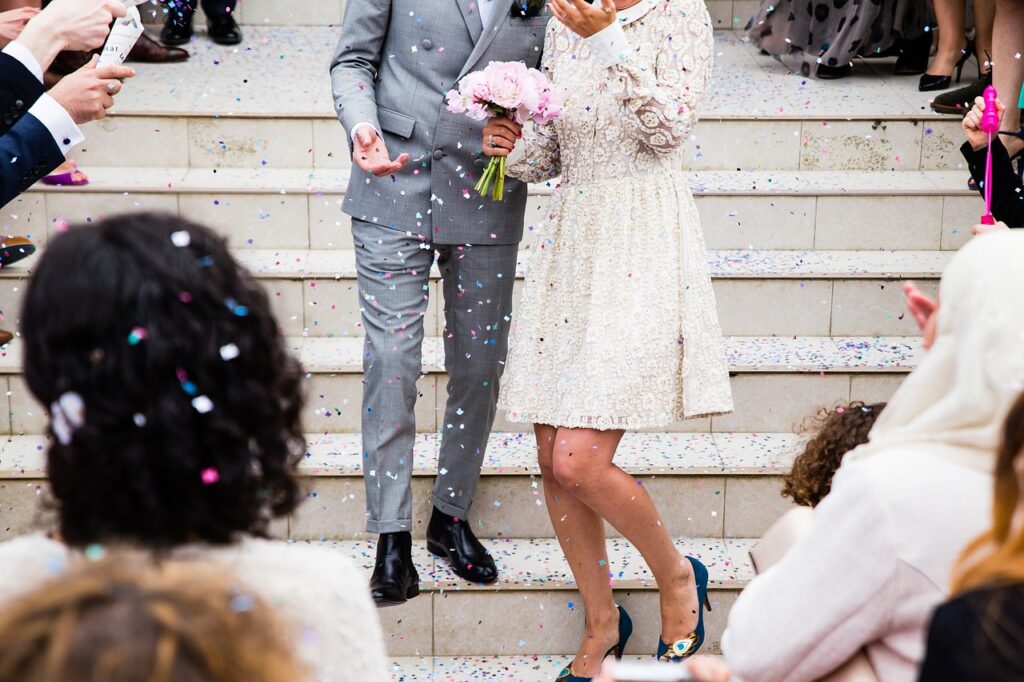
Summary
Voguing Paris: the art of expression in the capital
Discover the voguing in Parisa scene vibrating And dynamic which embodies the art of expression and creativity. Born in the 1960s and 1970s in New York, this highly stylised dance has found its place in the Parisian cultural landscape. Between the Eiffel Tower and the Place Trocadero, voguing is flourishing, offering a unique experience to celebrate identity and diversity in the capital.
Voguing in Paris is more than just a dance. cultural movement that unites people from all walks of life. Whether you're a resident or a visitor, the voguing scene welcomes you to a cultural Olympiad, allowing free expression and integration into a vibrant community. Discover how voguing has conquered the heart of Paris and become essential to its nightlife and culture.
Summary
What is voguing?
Vogue is a highly stylised and improvised dancewhich originated in the New York ballroom scene of the 1970s and 1980s. Inspired by the poses of the models in the famous magazine VogueThis dance is distinguished by its movements characterised by precise angles and dramatic poses, often performed in rhythm with the music.
This dance incorporates distinctive elements such as the Hands & Arms controlIt requires remarkable coordination and dexterity in the arms, hands and wrists. The Catwalkwhere the dancers move confidently forward, imitating the gait of mannequins, the Duckwalkwhich is characterised by a duck-like walk with bent legs, and the Floor workwhich includes movements performed on the ground, are also fundamental aspects of voguing.
Voguing is subdivided into several styles, each with its own specific characteristics. L'Old Way represents the original style, with linear, static poses directly inspired by fashion models. The New Wayincorporates an athletic dimension and movements borrowed from the martial arts, giving the dance a more dynamic edge. The Vogue FemFinally, it is characterised by its ultra-femininity, influenced by ballet, jazz and modern dance, featuring exaggerated poses and movements such as Spins/Dips and Death Drops.
More than just a dance, voguing is a way of life. radical self-expression and a performance that allows dancers to celebrate their identity while pushing back the boundaries of gender. Rooted in ballroom culture, this dance brings participants together by houseswho compete in balls to showcase their talent and creativity.
The fascinating history of voguing
The origins of voguing in New York
THE voguing is rooted in New York's vibrant Harlem district, and has flourished in the city's music scene. ballroom drag of the 1960s and 1970s. This underground culture was essentially formed by the black and Latino LGBTQ+ community, seeking to forge a safe and welcoming space in the face of the challenges of discrimination and racism prevalent in society at the time.
This movement was born as a cry of social protest and a way of expressing frustration at the injustices of everyday life. Inspired by the Harlem Renaissance, the ballroom scene promoted a fusion and intersection of identities of race, gender and sexuality, offering a haven where people could break free from societal restrictions.
Leading personalities such as Crystal LaBeija and the House of LaBeija have been pillars in the foundation of this alternative scene.
Voguing was born at the heart of these ballsThese were beauty contests and fashion shows where participants came together to celebrate their identity and creativity. Organised by houses run by mothers and fathers which offered protection and guidance to kidsThese events were a refuge for young people ostracised by their families because of their sexual orientation.
The arrival of voguing in France
At the turn of the millennium, voguing entered a new era in France, mainly under the impetus of pioneers such as Lasseindra Ninja. A product of the famous House of Ninja New Yorker Lasseindra Ninja arrived in France in 2005, playing a key role in the development of voguing in France. In collaboration with Steffie Mizrahi, she organised the first balls in Paris, breathing life into a scene Ballroom vibrant and dynamic in the capital.
The introduction of voguing in France has been consolidated by various cultural events and performances, highlighting the richness and diversity of this dance. Today, the Parisian voguing scene is one of the busiest in Europe, attracting dancers and spectators from all walks of life eager to celebrate expression, creativity and identity.
The different styles of voguing
Old Way: classic elegance
Also known as "Old School Vogue", theOld Way is the original form of voguing. Born in the 1970s and 1980s, this style is characterised by its graceful movements, his net lines and his dramatic poses. The emphasis is on precision, there symmetry and the fluidity movements, inspired by a variety of sources such as Egyptian hieroglyphics, martial arts, breakdance and men's fashion poses.
This style is often seen as an elegant duel between two dancers, where grace and linearity of movement prevail. The Old Way was the foundation of later styles such as the New Way and Vogue Fem, and is considered the mainstay of voguing.
New Way: flexibility and technique
THE New Way marks an evolution of classic voguing, adding complex and sophisticated movements. This style can be recognised by its flexibility, his contortions and his exaggerated poses. New Way dancers use mime and illusion techniques such as "clicks" (joint contortions) and "arms control" (creating illusions with the hands and wrists).
Inspired by martial arts, gymnastics and haute couture fashion, the New Way brings a dynamic and acrobatic dimension to voguing, making the performances more spectacular and inventive.
Vogue Fem: expressing femininity
THE Vogue Fem celebratesexpression of femininity and fluidity. Drawing its inspiration from modern dance, ballet, figure skating and pantomime, this style is characterised by sensual movements, hair flips and poses reminiscent of fashion shows. It is divided into two categories: "dramatic", which favours fast movements and spectacular figures, and "soft & cunt", which emphasises the "soft" side of the body. grace and the feminine beauty through gentler, more elegant movements.
This style offers dancers a platform to express their femininity, celebrate the strength and beauty of female expression, and explore and assert their identity in a creative and liberated way.
Ballroom culture in Paris
Parisian houses: families at the heart of voguing
In Paris, the culture ballroom is deeply rooted in the idea of housesThese are surrogate families and essential support networks for members of the LGBTQ+ community. Among these housesthe House of Revlon, there House of Ladurée, and the House of Gorgeous Gucciwho play a central role in the world of Parisian voguing.
Each house is run by a mother or a fatherwhich looks after the members, often referred to as the kids. These leaders play an important role in maintaining cohesion and solidarity within their community.
THE houses Many of these Parisian venues were founded by emblematic voguing figures such as Lasseindra Ninja and Vinii Revlon, who played a key role in developing and stimulating the ballroom scene in France. Rheeda Ladurée, creator of the first French house, the House of Laduréeis another major figure who has helped shape this community by providing a safe and inclusive space for dancers and artists.
Paris balls: competitions and celebrations
THE ballsParis's ballroom culture, where the most famous houses and their members come together for competitions, performances and celebrations. Iconic venues such as the Gaîté Lyrique, Carreau du Temple and La Villette host these events, making Paris a vibrant and enduring home for ballroom culture.
These balls bring together a wide variety of participants, including woman queens, of the butch queensand others competing in categories such as face, body, realnessamong others.
THE balls The Stars of Paris are Shining Ball" at the Gaîté Lyrique, provide a stage for dancers to express their talent, creativity and individuality. More than just competitions, these events celebrate the identity, diversity and resilience of the ballroom community. They attract influential personalities and remarkable talents such as Keiona and Mami Wata, who also help to raise the profile and impact of the Parisian ballroom scene through television programmes such as Drag Race France.
Where can you practice voguing in Paris?
Studios and courses for beginners and advanced
Paris, with its vibrant culture, is full of options for those wishing to learn or perfect their voguing technique. Le Centre Paris Anim' Maurice Ravelnestled in the 12th districtwelcomes adults to voguing classes from Monday to Wednesday. Led by experienced instructors, these sessions explore the three major styles of voguing: Old Way, New Way And Vogue Fem.
Registrations are open directly on site, inviting everyone to join this lively and passionate community.
There Gaîté Lyriquea pillar of the capital's cultural scene, also offers voguing workshops, often led by leading figures such as Vinii Revlon. These shared moments are a golden opportunity for novices to learn the basics of voguing and for experienced dancers to perfect their art.
Not-to-be-missed events for enthusiasts
Paris is turning into a veritable epicentre of voguing with its many dedicated events. Visit *Paris Sports Ballplanned during the 2024 Olympic Games at the Parc des Champions du Trocadéro, is one of the most eagerly awaited events of the year. Free of charge and organised as part of the Cultural Olympiad, this show promises spectacular voguing confrontations inspired by the Olympic spirit.
The dancers of the House of Revlon and other Parisian collectives will be putting on breathtaking performances in celebration of diversity and movement.
THE *balls* organised across the city, notably at the Gaîté Lyrique and the Carreau du Temple, are also among the highlights. These evenings bring together the different houses and their members around festive competitions, creating a unique space for expression and creativity for the community.
These get-togethers offer a privileged window onto the excellence of voguing and a chance to immerse yourself in an open and energetic community.
The social and cultural impact of voguing
Dance as an expression of identity
THE voguing transcends the simple notion of dance to become a powerful form ofexpression of identity. Originating in New York's African-American and Latino LGBTQ+ communities, this dance was born as a means of asserting and celebrating gender and sexual identity. The movements and poses, inspired by fashion models, offer dancers a way of express their femininity and masculinityor any other gender identity, in a creative and liberating way.
Deeply rooted in the culture of the ballsVoguing dance is at the heart of competitions and celebrations, where every performance is an affirmation of self. It's a way of defying societal norms and to assert their right to expression and existence. Voguing has thus played an essential role in making marginalised identities visible and validating them, creating a space of freedom away from the constraints of traditional society.
A safe space for the LGBT+ community
Voguing and ballroom culture have established a a safe and welcoming space for the LGBT+ community. In a world where discrimination and violence against LGBTQ+ people are still rife, the houses and the balls have offered refuge. These spaces offer support, acceptance and shared sensitivity, structured around houses which function as chosen families and provide a vital support network for those rejected by their biological family or community.
These places are characterised by an atmosphere of solidarity and resistance in the face of injustice. Voguing and ballroom culture encourage members of the community to reconnect with their roots, celebrate their diversity and fight for their rights. The documentary Paris Is Burning illustrates how the community has used voguing as a means of asserting its identities and celebrating its unique experiences in the face of prejudice and discrimination.
Why is voguing essential in Paris today?
Voguing has established itself as an essential part of the dance scene. Parisian cultural and social sceneplaying a multiple and significant role. He elevated Paris to the rank of world capital of ballroom cultureattracting dancers and spectators from all walks of life.
Events such as *The Stars of Paris Are Shining Ball at the Gaîté Lyrique, organised as part of the Cultural Olympiad, are a perfect illustration of the vitality and creativity voguing, making it accessible to a wide and varied audience.
Voguing is also essential to the promoting diversity and inclusion. In Paris, houses like the *House of Revlon and the *House of Ladurée create safe and welcoming spaces for members of the LGBT+ community, offering invaluable support to those seeking to express their identity freely and authentically.
Voguing has also become an integral part of the French popular culture in a major way. Artists like Kiddy Smile, who fuse voguing with music and performance, have played a key role in popularising the dance beyond the traditional ballroom communities.
Television broadcasts, fashion events such as Paris Fashion Week, and collaborations with renowned artists have helped to put voguing in the spotlight, making it an essential part of the contemporary cultural landscape Paris.
Voguing is also a powerful means of self-love and self-confidence. Through dramatic, stylised movements, the dancers learn to value their bodies and assert themselves without fear, building resilience and pride.
This form of self-expression encourages individuals to live more fully and to claim their place in society.
Lastly, voguing in Paris symbolises the city's ability to welcoming and celebrating alternative and underground cultures. By embracing this dance and its community, Paris is affirming its commitment to diversity, artistic expression and individual freedom.
So voguing is not just a dance, it's a fundamental part of thecultural and social identity of Paris today.
Conclusion
THE voguing in Paris is a dazzling and energetic celebration of the culture ballroomThis dance, which originated in New York but now makes its home in France, has been propelled to the forefront by iconic figures such as the dancers themselves. This dance, which originated in New York and has made its home in France, has been brought to the fore by such emblematic figures as Lasseindra Ninja And Vinii Revlon.
THE houses in Paris, including the House of Revlon and the House of LaduréeThey play an indispensable role in the community, providing an invaluable haven and support for members of the LGBT+ community.
Voguing enriches culture in its many dimensions, from fashion to music, and celebrates diversity and inclusion. Events such as The Stars of Paris are Shining Ball at the Gaîté Lyrique perfectly illustrate the vitality of this scene.
As you explore Parisian nights, be sure to visit these iconic venues and immerse yourself in the houses to capture the soul of voguing. Come and celebrate expression, creativity and identity in the heart of Paris. european capital of voguing.
Take part in ballsTake part in the workshops, and get caught up in the spirit of the ballroom community. Voguing is much more than a dance; it's an affirmation of pride, resilience and freedom.
So, are you ready to dazzle the audience and immerse yourself in this lively and warm scene?
FAQs
What are the origins of voguing dance and in what context did it emerge?
Voguing took root in the 1960s and 1980s in the heart of the ballroom scene in Harlem, New York, mainly among the black and Latin LGBTQ communities. Inspired by the poses of models in fashion magazines, notably VogueThis art form has been propelled to the forefront by competitions known as "balls". It has become a means of expression and of combating social discrimination.
What are the different styles of voguing and how do they differ from one another?
Voguing is divided into three main styles: Old Way, New Way, And Vogue Fem.
- Old Way Characterised by linear movements, surgical precision and symmetry, the Old Way favours graceful, fluid poses, often summed up by the expression "pop, dip & spin".
- New Way This style emerged from the Old Way and is characterised by the integration of contortions, remarkable flexibility and movements inspired by the martial arts, manifested in geometric and dynamic poses.
- Vogue Fem Accentuating femininity, this style is characterised by complex postures, whipped hair movements and deathdrops. It encompasses the five fundamental elements of voguing: Hand Performance, Catwalk, Duckwalk, Floor Performance, and Spins and Dips.
How is voguing linked to ball culture and the LGBTQ+ community?
Since its beginnings in Harlem in the 1960s and 1970s, voguing has been intrinsically linked with ball culture and the LGBTQ+ community. Born out of ballroom competitions, the dance celebrates individual identity and aesthetics, providing a space for support and solidarity. Houses" play a role in providing a support network for those rejected by their biological family or community. In this way, voguing embodies a form of resistance to marginalisation and remains a powerful symbol of resilience and self-expression within the LGBTQ+ community.
What are the key elements and fundamental movements that characterise a voguing performance?
A voguing performance is characterised by several fundamental elements and movements, such as :
- Hand and arm control : Dexterity and coordination of movements in the arms, hands and wrists.
- Catwalk A confident, upright gait, reminiscent of a cat.
- Duckwalk A dance performed with the legs bent, imitating a duck's gait.
- Floor Performance A series of movements performed on the floor.
- Dips and Death Drops Spectacular falls to the ground, adding dramatic effect.
- Spins/Dips Acrobatic tricks and dives, highlighting the athletic aspect of voguing.
Read also
follow us
on instagram
Follow our news,
take advantage of our tutorials and participate to our
contests!
BREAKING NEWS!
Receive our newsletter.






